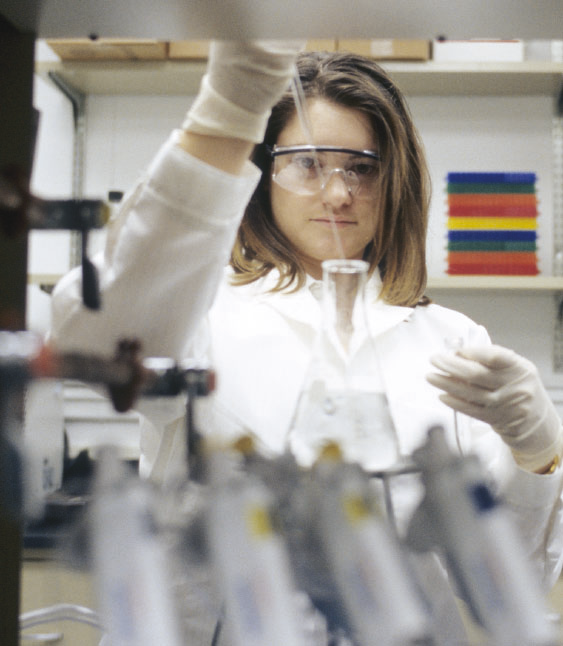Cryptosporidium parvum, a common and hardy parasite, can be deadly for people with weakened immune systems.
The pest is especially troublesome for two reasons, says Kristen Jellison. Cryptosporidium is so small that it passes through water-treatment systems without being eradicated. And being resistant to chlorine, it is not easily disinfected.
There is no medical treatment for humans infected with Crypto. And while healthy people may suffer nothing more than gastrointestinal distress, patients with compromised immune systems, such as people with HIV, can face life-threatening symptoms. The parasite has been found all over the world and in hosts ranging from humans to wildlife to domestic animals.
Jellison, assistant professor of civil and environmental engineering, is seeking ways to reduce the waterborne transmission of the parasite.
“We’re studying its fate and transport in the watershed – where it’s coming from, how it’s moving through the watershed, and what environmental conditions impact its survival,” says Jellison. “We want to understand what’s happening to it in the environment so we can design better watershed management strategies to prevent humans from being exposed.”
In a project funded by the Philadelphia Water Department, Jellison is attempting to determine the sources of Cryptosporidium in the city’s water supply. Twice a month, the department sends water samples. Jellison extracts the parasite’s DNA, sequences it and compares it to the DNA of Cryptosporidium from various animal hosts. Because there are host-adapted genotypes of Cryptosporidium, Jellison can make an educated guess as to which animals may have contaminated each specific water sample with Cryptosporidium, though transmission of the parasite from species to species makes complete certainty impossible. Support for this work is also being provided by the Pennsylvania Infrastructure Technology Alliance.
In a related project, Jellison is studying the effect on Cryptosporidium of biofilms, which are sticky layers of bacteria that grow on solid surfaces immersed in water. Some evidence suggests that the parasite gets trapped in biofilms; Jellison is trying to determine whether Crypto remains infectious for a longer period of time while trapped or dies off. She is also studying the sloughing off of biofilms from the surfaces to which they’ve been attached and the impact this has on Cryptosporidium fate and transport. An NSF CAREER Award supports this research.
Finally, Jellison is exploring ultraviolet rays in sunlight and their potential for disinfection. Certain wavelengths of UV (such as UV-C, which is highly damaging on a per-photon basis but is outside of the solar spectrum) have been shown to adequately disinfect Cryptosporidium in water. Lamps producing those germicidal wavelengths are used in water treatment plants. Jellison’s work is measuring the disinfection potential of natural sunlight’s UV, which, while less damaging than UV-C on a per-photon basis, makes up a significant fraction of the solar spectrum.
Jellison also co-advises a group called Students for Sustainable Development, whose membership includes Lehigh’s chapter of Engineers Without Borders as well as students from majors outside of engineering. The group is aiding Pueblo Nuevo, a village in Honduras, whose water supply has been inadequate and contaminated since it was damaged by Hurricane Mitch in 1998. Jellison has visited the village, met with residents and community leaders, and is helping Lehigh students design and build a spring box, water tank, sand filter and chlorination system to produce cleaner water.
Whether in Central America or Philadelphia, Jellison seeks to include a human element in her work. “Research can be very, very tedious,” she says. “The motivation to stick with it is knowing that the end product will benefit people. It’s nice to know that what I’m doing is going to make a difference.”

